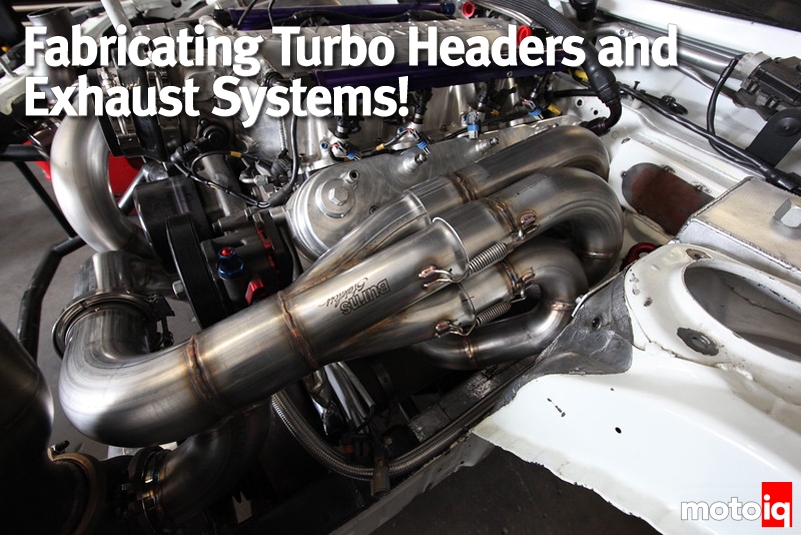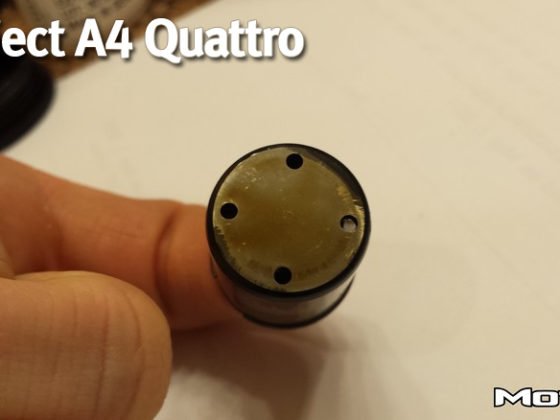,
 Building a 5″ exhaust system was something of a challenge. 5″ 304 thin wall 16 gauge stainless tubing from Burns was used. One of the new things done to the car was a switch to right hand drive. Part of the reason for switching to RHD was so that the exhaust system could be simpler and straighter since there was no drysump pump in the way. The exhaust could now shoot straight out the back with slight notching of the crossmember. This also kept the drysump pump from being continually heated by the exhaust.
Building a 5″ exhaust system was something of a challenge. 5″ 304 thin wall 16 gauge stainless tubing from Burns was used. One of the new things done to the car was a switch to right hand drive. Part of the reason for switching to RHD was so that the exhaust system could be simpler and straighter since there was no drysump pump in the way. The exhaust could now shoot straight out the back with slight notching of the crossmember. This also kept the drysump pump from being continually heated by the exhaust.The Garrett GTX50R turbo is equipped with a V-band discharge and we used a Burns all stainless V-band clamp to start our exhaust system. Many V-bands on the market have mild steel parts in them that can galvaniclly corrode rapidly when welded to stainless so it is important to start out with a high quality part.
 Since 5″ tubing is only available in 90 degree and less bends, Chris Eimer just did the JDM slice the pie method of getting the huge tubing to fit tightly under the car. The car is pretty low so a tight fit to the chassis is necessary.
Since 5″ tubing is only available in 90 degree and less bends, Chris Eimer just did the JDM slice the pie method of getting the huge tubing to fit tightly under the car. The car is pretty low so a tight fit to the chassis is necessary.  It's very hard to simply weld a hanger to large diameter thin wall tubing and have it not tear out quickly. We have had a lot of experience with that! Chris uses a saddle mount to spread the load out over a large section of piping. The saddle mount allows some movement to take stress out of the exhaust as well. This is a good thing to copy as it really works!
It's very hard to simply weld a hanger to large diameter thin wall tubing and have it not tear out quickly. We have had a lot of experience with that! Chris uses a saddle mount to spread the load out over a large section of piping. The saddle mount allows some movement to take stress out of the exhaust as well. This is a good thing to copy as it really works! Using a Bell Intercoolers tube and fin core, Chris Eimer welds up some end tanks. Bell Intercoolers is one of the only places to buy large tube and fin cores. The team went away from the large bar and plate intercooler to save weight and to take advantage of a tube and fin's better heat exchange in moving air. The intercooler tanks will be arranged to flow from bottom to top which will eliminate quite a bit of length from the charge pipes. This saves weight, reduces complexity and improves response.
Using a Bell Intercoolers tube and fin core, Chris Eimer welds up some end tanks. Bell Intercoolers is one of the only places to buy large tube and fin cores. The team went away from the large bar and plate intercooler to save weight and to take advantage of a tube and fin's better heat exchange in moving air. The intercooler tanks will be arranged to flow from bottom to top which will eliminate quite a bit of length from the charge pipes. This saves weight, reduces complexity and improves response.  Chris fabricated the intercooler end tanks from pieces of aluminum sheet he cut and welded. Welding on an intercooler core takes patience and skill because an intercooler core is the ultimate heat sink which makes welding more difficult.
Chris fabricated the intercooler end tanks from pieces of aluminum sheet he cut and welded. Welding on an intercooler core takes patience and skill because an intercooler core is the ultimate heat sink which makes welding more difficult. Take a look at our beautiful raw stainless headers before they get sent to Embee Performance for thermal barrier coating. You can clearly see the sprung slip flanges from the primary tubes to the collectors that were used to prevent cracking. It's a pity to have to hide all the nice work with coating!
Take a look at our beautiful raw stainless headers before they get sent to Embee Performance for thermal barrier coating. You can clearly see the sprung slip flanges from the primary tubes to the collectors that were used to prevent cracking. It's a pity to have to hide all the nice work with coating!




3 comments
Nice, it looks so much cleaner and tidier. Ever thought of going twin-turbo? Cheers!
We wanted a more gradual onset of power that a single turbo produces, our previous experiments with twin turbos made a fast violent onset of power that made it hard to get the car to hook up out of turns. We also wanted to make things simple.
Thanks a lot for your reply, Mike. Some ‘a these young ‘uns might not value it, but I’m from a time where you could only pick the brains of the local gearhead, or library, or test your luck through trial and error. To have access to pros like you (and pick *their* brains) from halfway across the world is a privilege! Keep on truckin’. 😉